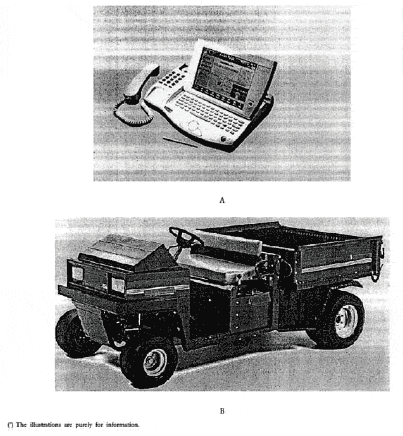
COMMISSION REGULATION (EC) No 799/1999of 16 April 1999 concerning the classification of certain goods in the Combined Nomenclature- "Official Journal of the European Communities", No L 102/8 of 17.4.1999 - |
THE COMMISSION OF THE EUROPEAN COMMUNITIES,
Having regard to the Treaty establishing the European Community,
Having regard to Council Regulation (EEC) No 2658/87 of 23 July 1987 on the tariff and statistical nomenclature and on the Common Customs Tariff(1), as last amended by Commission Regulation (EC) No 2261/98(2), and in particular Article 9 thereof,
Whereas in order to ensure uniform application of the Combined Nomenclature annexed to the said Regulation, it is necessary to adopt measures concerning the classification of the goods referred to in the Annex to this Regulation;
Whereas Regulation (EEC) No 2658/87 has set down the general rules for the interpretation of the Combined Nomenclature and those rules also apply to any other nomenclature which is wholly or partly based on it or which adds any additional subdivision to it and which is established by specific Community provisions, with a view to the application of tariff and other measures relating to trade in goods;
Whereas, pursuant to the said general rules, the goods described in column 1 of the table annexed to the present Regulation must be classified under the appropriate CN codes indicated in column 2, by virtue of the reasons set out in column 3;
Whereas it is accepted that binding tariff information issued by the customs authorities of Member States in respect of the classification of goods in the Combined Nomenclature and which do not conform to the rights established by this Regulation, can continue to be invoked, under the provisions in Article 12(6) of Council Regulation (EEC) No 2913/92 establishing the Community Customs Code(3), for a period of three months by the holder;
Whereas the measures provided for in this Regulation are in accordance with the opinion of the Tariff and Statistical Nomenclature Section of the Customs Code Committee,
_________
(1) OJ L 256, 7.9.1987, p. 1.
(2) OJ L 292, 30.10.1998, p. 1.
(3) OJ L 302, 19.10.1992, p. 1.
HAS ADOPTED THIS REGULATION:
Article 1
The goods described in column 1 of the annexed table are now classified within the Combined Nomenclature under the appropriate CN codes indicated in column 2 of the said table.
Article 2
Binding tariff information issued by the customs authorities of Member States which do not conform to the rights established by this Regulation can continue to be invoked under the provisions of Article 12(6) of Regulation (EEC) No 2913/92 for a period of three months.
Article 3
This Regulation shall enter into force on the 21st day following its publication in the Official Journal of the European Communities.
This Regulation shall be binding in its entirety and directly applicable in all Member States.
Done at Brussels, 16 April 1999.
For the Commission
Mario MONTI
Member of the Commission
ANNEX
Description of goods |
Classification |
Reason |
(1) |
(2) |
(3) |
1. Composite machine, consisting of the following components in a single housing: |
8517 50 90 |
Classification is determined by the provisions of General Rules 1 and 6 for the interpretation of the Combined Nomenclature, Note 3 to Section XVI, Note 5(E) to Chapter 84 and the wording of the CN codes 8517, 8517 50 and 8517 50 90. |
See illustration A (*) |
|
|
2. New four-wheeled vehicles with a 928 cm3 diesel engine, a gross vehicle weight of approximately 1 800 kg and approximate dimensions of 2,7 m (length) x 1,4 m (width). The vehicles have an open cabin and a bench seat for 2 persons (including the driver) and an open load area with the approximate dimensions of 1,2 m (length) x 1,4 m (width). |
8704 21 91 |
Classification is determined by the provisions of General Rules 1 and 6 for the interpretation of the Combined Nomenclature and the wording of the CN Codes 8704, 8704 21 and 8704 21 91. |
